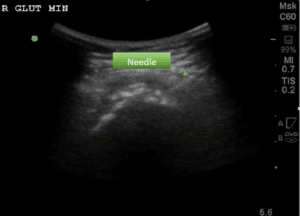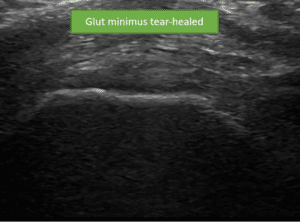Hassan Mubark1*
1Rheumatologist, Institution: Auckland Regenerative Clinic, Ormiston Specialist Centre, 125 Ormiston Road / Flat Bush, Auckland 2019, New Zealand
*Correspondence author: Hassan Mubark, Rheumatologist, Institution: Auckland Regenerative Clinic, Ormiston Specialist Centre, 125 Ormiston Road / Flat Bush, Auckland 2019, New Zealand; Email: [email protected]
Published Date: 19-06-2023
Copyright© 2023 by Mubark H. All rights reserved. This is an open access article distributed under the terms of the Creative Commons Attribution License, which permits unrestricted use, distribution, and reproduction in any medium, provided the original author and source are credited.
Abstract
Tendinosis with or without tendon tear is a common form of tendon pathology and should be managed differently from inflammatory tendinitis although both are termed tendinopathy.
The current tendinopathy management involves rest, icing, a brace, oral anti-inflammatory medicine, and physiotherapy. Should that fail a trial of Corticosteroid (CS) injection allow surgery as a last resort.
This article presents a middle-aged male, a human resources manager who suffered two occasions of tendinopathy with the first one being a gradual development of symptomatic right common flexor origin calcific tendinosis (golfer’s elbow) on ultrasound (USS) secondary to competitive squash that failed conservative management and USS-guided CS injection. He had a long-term symptomatic recovery after six weeks following a single autologous platelet-rich plasma (PRP) therapy. Three years later he injured his right hip following a twisting injury to the right hip/gluteal area resulted in debilitating symptoms, USS scan revealed gluteus minimus/ medius calcific tendinosis, a partial split tear of the gluteus minimus, and trochanteric bursitis. He failed physiotherapy and anti-inflammatory medicine. He elected PRP therapy over CS injection, he became symptoms free six weeks after the injection. Teen weeks post-injection USS revealed a complete resolution of gluteus minimus tendon tear and no trochanteric bursitis, no clear tendinosis features but calcifications present.
This case demonstrates the use of relatively safe affordable clinic-based PRP therapy for long-term symptomatic control of tendinopathy with/without a tear. This is superior to oral anti-inflammatory and CS injections. Additionally, the healing of the tendon tear could save people from avoiding invasive surgery with its complications and long recovery time.
Thanks to the regenerative healing power of the growth factors and signaling proteins in platelets that stimulate the internal mesenchymal stem cells. We recommend a large-scale randomized control trial to confirm those findings and standardization of the PRP technique, hoping regenerative medicine to become the mainstream therapy in several musculoskeletal pathologies, particularly in resistant injuries.
Keywords: Tendinopathy; Tendinitis’ Tear; Platelet-Rich Plasma (PRP); Corticosteroid; Growth Factors; Healing
Introduction
The term tendinopathy could be either tendinitis or tendinosis. Tendinitis means tendon inflammation develops from micro-tears following sudden overloading force, though research frequently reported what is assumed to be tendinitis is commonly tendinosis [1-3].
Tendinosis is a degeneration of the collagen in response to repetitive strain injury and chronic overuse, this process occurs because not enough rest for the tendon to heal. The wear and tear changes lead to an increase in the tendon bulk and loss of muscle strength, both contribute to the cycle of injury and can set the phase for secondary tendinitis and nerve impingement [4].
Current clinical practice is the use of oral Nonsteroidal Anti-Inflammatory Drugs (NSAIDs) while this is helpful in tendinitis, it has been found not good for tendinosis as it inhibits collagen repair [5]. Corticosteroid (CS) injection for tendinitis might help the inflammation but in tendinosis, this appeared to be more harmful than solving the problem as CS rises protein catabolism, suppresses type I collagen, and the synthesis of glycosaminoglycan and therefore sluggish the healing process [6,7].
The development of regenerative injections has been promising as a conservative therapeutic method not only to help manage musculoskeletal injuries but also to accelerate tissue regeneration and the healing process [8]. Common forms of regenerative injections include autologous blood injections, Platelet-Rich Plasma (PRP), conditioned plasma, mesenchymal stem cells, and prolotherapy.
In this article, we have treated our patient with PRP for trochanteric bursitis, gluteal tendinosis, and tendon tear.
Case Report
A middle-aged male works as a human resources manager. He is right-hand dominant, normally fit enjoying sports, particularly squash, and boxing for fitness. In Jan 2019 he presented with the gradual process of the right medial elbow constant pain, reduce range of motion, and impaired function of the elbow. The restriction in movement made him unable to shave his face, do shoelaces or dress himself or care for his special needs son. An Ultrasound Scan (USS) revealed Common Flexor Origin (CFO) calcific tendinosis. He tried Non-Steroidal Oral Anti-Inflammatory Drugs (NSAIDs), physical therapy, and acupuncture with no help. In March 2019 he attempted USS-guided Corticosteroid (CS) injection at the radiology department, this helped for three months with the return of the symptoms. After doing research in regenerative medicine and elected to undergo an experimental trial with Platelet-Rich Plasma (PRP). In November 2019, after informed consent and under sterile technique, we performed a PRP injection to the right CFO under USS-guided, the method we used taking 20 ml of blood placed in ACD-A sterile tubes to centrifuge for 8 minutes to extract 5 ml of PRP without leucocyte, this was mixed with 0.2 ml of calcium gluconate (to stimulate the platelets), this was injected at the CFO and the upper flexor tendons. After six weeks after the PRP injection he reported full recovery and return to his loved sports and training as a long-term.
At the end of Oct 2022, he injured his right hip after trying to catch his son, so he fell and over-reached twisting his right hip. The symptoms were gluteal and trochanteric pain, could not work in the garden without experiencing significant pain, affecting his job, could not do any exercises, or care for his sick son in and out of a swimming pool. He tried NSAIDs celecoxib and physical therapy with no help. In December 2022, USS showed gluteus minimus intrasubstance split type partial tear with calcific tendinosis, and gluteus medius calcific tendinosis as in Fig. 1.
In March 2023 he elected PRP therapy trial over CS injection given the latter only helped temporary when tried for golfer elbow. After informed consent and using a sterile technique, the PRP was performed under Sonosite USS guidance, using C60x/5-2 MHz transducer, as in Fig. 2. We took 30 ml of blood placed in ACD-A sterile tubes and centrifuges for 9 minutes then 9 ml of leucocyte poor PRP was extracted. We injected 4ml into posterior superior aspect of gluteus medius tendon substance and insertion and 5 ml in the gluteus minimus tear /insertion and trochanteric bursa. Six weeks after the procedure he reported zero pain and a full return to normal life. Teen weeks post-injection USS revealed the resolution of gluteus minimus tendon tear and no trochanteric bursitis, settling tendinosis but evidence of tendon calcifications, as in Fig. 3.

Figure 1: Right hip gluteus minimus tendon tear.

Figure 2: USS-guided plasma injection.

Figure 3: Right hip USS showed healed gluteus minimus tendon tear 10 weeks post-PRP therapy.
Discussion
The common practice of managing tendinopathy is rest, icing, a brace, oral anti-inflammatory medicine, and physiotherapy. Repeatedly doctors are treating all cases as tendinitis and assuming the inflammatory process is the main issue thus NSAIDs or Corticosteroid (CS) injections are used.
Many injuries frequently assumed to be tendinitis are actually tendinosis. Tennis elbow is typically described as tendinitis of common extensor origin; however, no signs of acute or chronic inflammation have been instituted in any surgical pathologic samplings in patients diagnosed clinically with tennis elbow proving that tennis elbow is not actually tendinitis, but the histology is tendinosis [2,9].
The belief that tendinitis is the earliest stage of tendinosis gives the impression to assume that inflammation and micro-tears are a precursor to the degeneration of collagen. Histopathologic examines show that torn tendon fibres, calcification, and scar tissue only originate in combination with tendinosis while inflammatory cells are rarely found in conjunction with tendinosis, backing up the hypothesis that tendinitis happens secondarily to tendinosis [1-3]. Excessive and/or repetitive stretchable forces on the tendon are likely what triggers the degenerative process associated with tendinosis [10].
Our patient had a superior clinical response to a single PRP therapy for the golfer’s elbow in 2019, we have not repeated his scan as he remained asymptomatic and long-term full functions. On his second injury of the right hip, he had debilitating symptoms which completely resolved six weeks after one session of PRP therapy and his repeat USS showed healing of the tear, settling tendinosis and no trochanteric bursitis.
Even though PRP is currently not funded by several insurance companies, but we propose and hope this will change soon given it is affordable, simple to do, relatively safe with minimal side effects, and a far better option than invasive surgery.
Conclusion
We hypothesize the use of platelet-rich plasma therapy has resulted in the resolution of debilitating symptoms, improved quality of life, and evidence-based tendon tear healing and aborting inflammation on ultrasound scans within a short period of time. This is a simple cost-effective approach worth trying, it could save people from complex invasive surgery. However, we need to confirm those findings are consistent in broad randomized controlled trials.
Conflict of Interest
The authors have no conflict of interest to declare.
References
- Khan KM, Cook JL, Kannus P, Maffulli N, Bonar SF. Time to abandon the “tendinitis” myth: painful, overuse tendon conditions have a non-inflammatory pathology. BMJ. 2002;324(7338):626-7.
- Kraushaar B, Hirschl RP. Current concepts review – tendinosis of the elbow (Tennis Elbow). Clinical features and findings of histological, immunohistochemical, and electron microscopy studies. J Bone and Joint Surg. 1999;81(2):259-78.
- Khan KM, Cook JL, Taunton JE, Bonar F. Overuse tendinosis, not tendinitis: part 1: a new paradigm for a difficult clinical problem. The Physician and Sports Medicine. 2000;28(5):38-48.
- Evelyn Bass, LMT. Tendinopathy: Why the difference between tendinitis and tendinosis matters. Int J Ther Massage Bodywork. 2012;5(1):14-7.
- Tsai WC, Tang FT, Hsu CC, Hsu YH, Pang JH, Shiue CC. Ibuprofen inhibition of tendon cell proliferation and upregulation of the cyclin kinase inhibitor p21CIP1. J Orthopedic Resear. 2004;22(3):586-91.
- MacMahon PJ, Eustace SJ, Kavanagh EC. Injectable corticosteroid and local anesthetic preparations: a review for radiologists. Radiology. 2009;252:647-61.
- Barnett J, Bernacki MN, Kainer JL, Smith HN, Zaharoff AM, Subramanian SK. The effects of regenerative injection therapy compared to corticosteroids for the treatment of lateral Epicondylitis: a systematic review and meta-analysis. Arch Physiother. 2019;9:1-2.
- Reeves KD, Fullerton BD, Topol G. Evidence-based regenerative injection therapy (prolotherapy) in sports medicine. The Sports Medicine Resource Manual. Saunders (Elsevier). 2008:611-9.
- Boyer MI, Hastings H. Lateral tennis elbow: Is there any science out there? J Shoulder Elbow Surg. 1999;8(5):481-91.
- Murrell GA. Understanding tendinopathies. Br J Sports Med. 2002;36(6):392-3.
Article Type
Case Report
Publication History
Received Date: 27-05-2023
Accepted Date: 12-06-2023
Published Date: 19-06-2023
Copyright© 2023 by Mubark H. All rights reserved. This is an open access article distributed under the terms of the Creative Commons Attribution License, which permits unrestricted use, distribution, and reproduction in any medium, provided the original author and source are credited.
Citation: Mubark H. Gluteal Tendon Tear Healing on Ultrasound 10 Weeks Following a Single Platelet-Rich Plasma Injection: A Case Report. J Ortho Sci Res. 2023;4(2):1-5.

Figure 1: Right hip gluteus minimus tendon tear.

Figure 2: USS-guided plasma injection.

Figure 3: Right hip USS showed healed gluteus minimus tendon tear 10 weeks post-PRP therapy.


